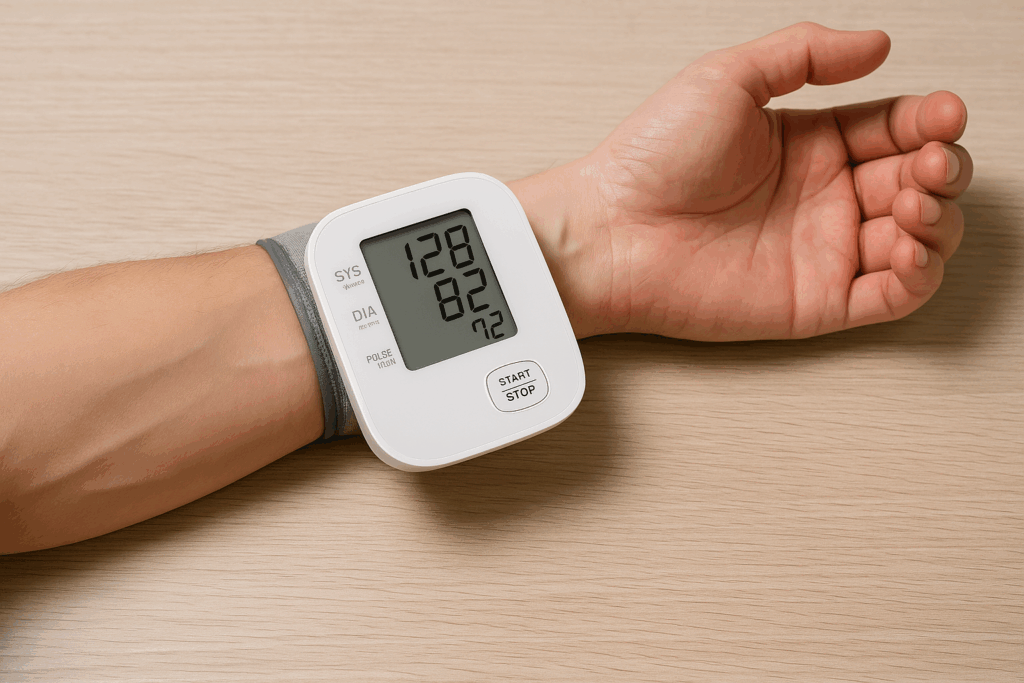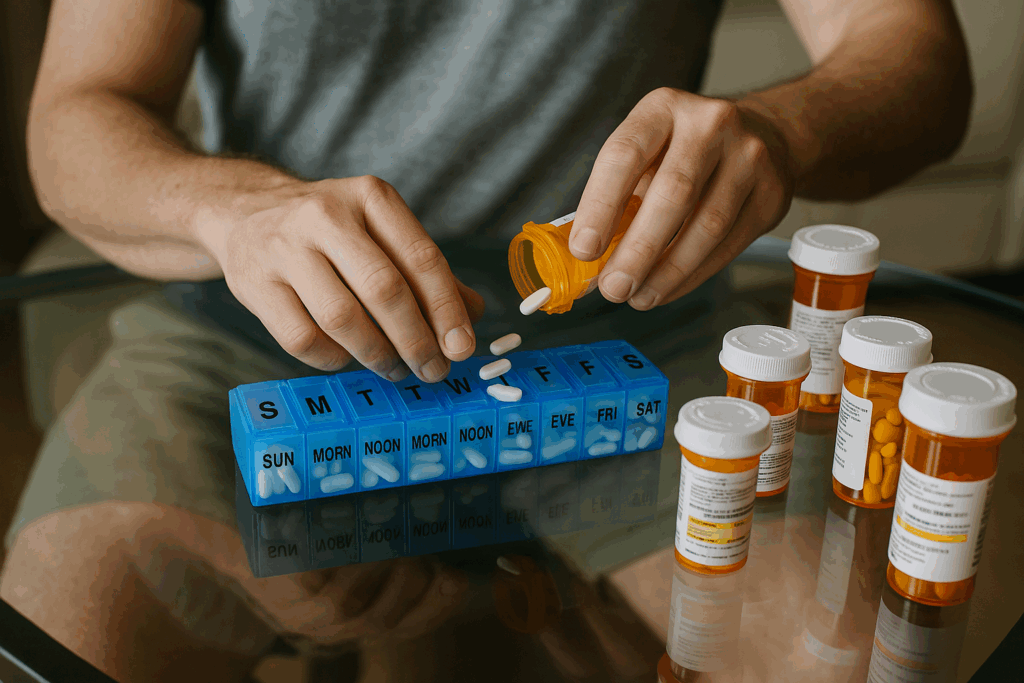Your Pressure, Your Power

Table of Contents
1. Why Blood Pressure Matters in Chronic Kidney Disease
When I was first told I had chronic kidney disease, the word ‘blood pressure’ came up more than I expected. I already knew it was important for heart health—but kidney health? That was new territory. It turns out, high blood pressure is one of the leading causes of kidney disease—and one of the most powerful tools we have to slow it down.
High blood pressure (also called hypertension) damages the small blood vessels in your kidneys. Over time, this pressure can scar the delicate filters responsible for cleaning your blood. In CKD, the kidneys are already working harder than they should—uncontrolled blood pressure only accelerates the wear and tear.
But here’s the good news: blood pressure is something you can control. With the right goals, the right tools, and the right mindset, blood pressure management becomes one of your best chances to preserve kidney function long term.
2. What Is the Right Blood Pressure Target for Me?
You’ve probably heard different numbers thrown around: 140/90, 130/80… even lower. So what’s right for someone with CKD?
The answer depends on your stage of kidney disease, your other health conditions, and whether or not you have protein in your urine (proteinuria). According to major kidney guidelines like KDIGO and ACC/AHA:
– If you have proteinuria (even mild): Target <130/80 mmHg
– If you have diabetes or heart disease: Lower targets are usually preferred
– If you’re older or frail: Your team may personalize a slightly higher goal
Blood pressure targets aren’t one-size-fits-all. They should balance kidney protection with quality of life—especially if medications cause side effects like fatigue, dizziness, or leg swelling.
Your best move? Ask your provider directly: “What’s my personal blood pressure goal—and why?”
3. The Truth About Protein in the Urine
Protein doesn’t belong in your urine. When kidneys are healthy, they keep protein (especially albumin) in your blood. But when filters are damaged—like in CKD—protein can leak out.
This isn’t just a lab finding. It’s a marker of damage and a predictor of progression. The more protein you lose in your urine, the faster kidney function can decline.
That’s where blood pressure comes in. Lowering your blood pressure helps reduce protein leakage, especially if you’re on a class of medications like ACE inhibitors or ARBs. These drugs help “tighten up” the filter and reduce the strain.
Even if your creatinine or GFR hasn’t changed, rising protein levels can be an early warning sign. Controlling blood pressure is your first line of defense.
4. Lifestyle First: Salt, Weight, and Movement
It’s easy to feel overwhelmed by medications—but don’t underestimate the power of lifestyle. Your body responds to what you put into it and how you move it.
Here’s what I learned from my team and from NatuRenal:
Low-Salt Diet: Sodium holds onto water. More water = more volume = more pressure. Reducing salt can lower your blood pressure naturally, and also reduce swelling.
– Aim for <2,000 mg sodium per day
– Avoid canned soups, deli meats, and processed snacks
– Cook at home with fresh herbs and no-salt seasoning
Weight Optimization: Even small weight loss can lower blood pressure—especially belly fat, which contributes to insulin resistance and inflammation.
– Start slow: aim for 5–10% weight reduction if overweight
Exercise: Moderate activity (like walking 30 minutes a day, 5 days a week) can improve your blood pressure, circulation, and stress levels.
Lifestyle is not a replacement for medication—but it lays the foundation. Meds work better when your body is supported.

5. Pill Burden Isn’t Failure—It’s a Strategy
At first, I thought needing more medications meant I was “failing.” I tried to eat right, cut salt, walk daily—so why did my doctor keep adding pills?
Here’s what I didn’t understand then: blood pressure control in CKD often requires combination therapy. It’s not because the meds “don’t work”—it’s because they each target a different mechanism.
Think of it like a team:
– ACE inhibitors or ARBs help the kidneys and reduce protein loss
– Calcium channel blockers help widen the blood vessels
– Diuretics help offload extra salt and fluid
– Beta blockers may help with heart protection or anxiety
– Others help fine-tune specific pressures or side effects
One pill rarely does it all—especially when kidneys are involved. Multiple meds at low doses often work better (and cause fewer side effects) than trying to max out one.
Combination therapy isn’t a punishment. It’s a plan. And it’s a plan to help you keep what kidney function you still have.
6. The Medication Toolbox: Why Combination Therapy Works
You may be prescribed more than one medication for your blood pressure—and that doesn’t mean one ‘isn’t working.’ It means they work together, each targeting a different part of how your body regulates pressure.
Some medications relax blood vessels. Others help your kidneys release extra fluid and salt. Some reduce protein leakage. And some protect your heart at the same time.
The point isn’t to memorize what each one does—but to understand the strategy. Low doses from multiple classes often work better (and cause fewer side effects) than maxing out a single pill.
If your list gets longer over time, don’t assume things are getting worse. It may just mean your treatment is getting smarter. Always be sure to carry a medication list with you for office visits as well as emergency situations.
7. When Blood Pressure Isn’t Cooperating
Sometimes—even with lifestyle changes and medications—blood pressure remains stubbornly high. This is called resistant hypertension, and it’s not your fault.
Reasons may include:
– White coat effect (it’s higher at the clinic than at home)
– Missed doses (because of cost, side effects, or forgetfulness)
– Drug interactions or diet sabotage (e.g., hidden salt)
– Hormonal or vascular issues
The solution isn’t to give up—it’s to work with your team. Home monitoring, medication adjustment, or lifestyle modifications matter. Remember your nephrologist should be considered your hypertension specialist.
Tracking your blood pressure (with a validated cuff) gives your doctor a better picture than clinic readings alone.
8. Staying in Control: Tracking, Trends, and Talking With Your Team
One thing that changed everything for me? I stopped waiting to be told how I was doing—and started keeping track.
I bought a reliable home BP monitor.
I logged my morning readings before meds.
I noted how I felt: dizzy? swollen? anxious?
I brought that info to appointments.
Some clinics also offer Remote Patient Monitoring—a way for your home readings to be securely shared with your care team between visits. It’s not surveillance; it’s support. And it can help detect problems early, long before symptoms appear.
Suddenly, the conversation changed. I wasn’t just a “CKD patient.” I was a partner.
9. Next Steps: Realistic Goals, Long-Term Gains
If you’re living with CKD and managing high blood pressure, you already know it’s not simple. But it’s not impossible either.
Start small:
– Cut back on salt
– Take short walks
– Track your BP for a week
– Ask your doctor what your target is—and why
Medications aren’t a failure. They’re support.
Your choices today protect your kidneys tomorrow.
You’re not alone. You’re not powerless.
You are Kidney Strong!

Disclaimer: This content is for educational purposes only. It is not intended to diagnose, treat, cure, or prevent any disease. Always consult your healthcare provider before making any changes to your health routine.
